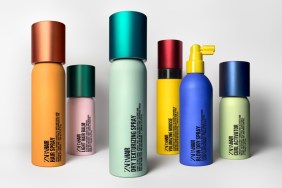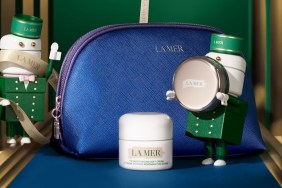How many times have you read about different skin types without actually stopping to consider what yours is? Do you plan your skincare regimen based on your specific type? It’s easy to purchase the latest and greatest cleanser in the prettiest bottle, but if it’s not the best for your skin, you’re wasting your money.
That’s why we’ve pulled together the five basic types of skin, how to determine which one is yours and how to take care of it. Because it’s never too late (or too soon) to start caring for your body’s biggest organ like you mean it. And unlike so many other health efforts, the results will be revealed faster than you think.
There’s a simple test that will help you know once and for all what type of skin you have. Rona Berg outlines the simple method in her book, Beauty: The New Basics. Start by washing your face at the end of the day to get rid of makeup, dirt and oil build-up. Pat dry and wait about an hour to give your skin a chance to reach its au naturel state. Take a lens cleaning cloth or rice paper and go over your face by pressing and then checking the paper. If the paper becomes see-through, it’s picked up a patch of oil. If it picks up small flakes of skin, you’ve hit a dry patch. Pay attention to the results from various parts of your face.
If your T-zone (your mid-forehead, nose, high cheeks and chin) area is oily, but the rest of your face isn’t, you’ve got combination skin. If the oil is all over (another telltale sign is shiny skin), then you guessed it, you’re oily. Normal skin has neither dry nor oily patches, so your paper should come back looking the way it did before you pressed it down. Dry skin not only flakes but also feels tight, can have red patches or look ashy, so look closely. Sensitive skin will leave you with a clean piece of paper, but is prone to breakouts and rashes with changes of cosmetics or skincare products.
Normal Treatment
Normal skin is what most of us wish we had. The color is uniform throughout and it’s smooth, with pores that are hard to see with the naked eye. But that doesn’t mean it should go untreated. A regimen of once-daily cleansing, followed with a daytime and nighttime moisturizer should do the trick. Exfoliate once a week; your products will work better and your skin will age less visibly over time. Lucky for you, since you don’t have to be extremely picky about the products you use, most drugstore finds are fine.
Combination Love
Combo skin needs to be treated differently in different areas. If your T-zone (or other areas of your face) produce more oil, it will help to use a toner over oily areas after you cleanse. Something like Weleda’s Refining Toner ($17.50) is a good buy. Moisturize dry areas with intense moisturizer like Clinique Moisture Surge Intense for Very Dry to Dry Combination Skin ($37). You can also use a bi-weekly moisturizing mask to combat dryness. If your combo skin is oil/normal instead of dry, use a basic moisturizer on normal areas.
Bye-Bye Dryness
Similar to dry patches on combination skin, use an intense moisturizer every day along with once-daily cleansing. Skip toner, since it could dry your skin out more. Weekly exfoliating will remove dead flake buildup, but be careful, too much exfoliation will make the flakes worse, so keep it to just once a week. Hot water also tends to dry skin out, so when you can, use lukewarm or cool H2O. A weekly cooling, hydrating mask will help rid you of irritation and redness caused by dryness. Try Boscia’s Cool Blue Calming Mask ($34).
Oil Slick
It doesn’t help to add excess oil and moisture to skin that’s already oily. That’s why you should use a cleanser made for oily skin, like Origins Zero Oil Deep Pore Cleanser ($21). Oil-free moisturizers and a weekly clay mask, which helps absorb excess oil, will help keep your skin mattified and free from breakouts caused by excess oil production.
A Little TLC
Caring for sensitive skin is more about what you don’t use than what you do use. Keep it simple by using the minimum number of products possible. If you find a mix that works, resist the urge to change it up for the latest and greatest. Thankfully, there are a lot of sensitive skin cleansers and moisturizers for you to try. Read those labels and make sure they’re devoid of fragrances, alcohol, parabens and dyes. Focus on natural products when it comes to your cleansing and moisturizing routine. For many with sensitive skin, over-the-counter products, no matter their claims, can still cause problems. Don’t hesitate to see your dermatologist for prescription products and a skin allergy test to help you know exactly what to avoid.







